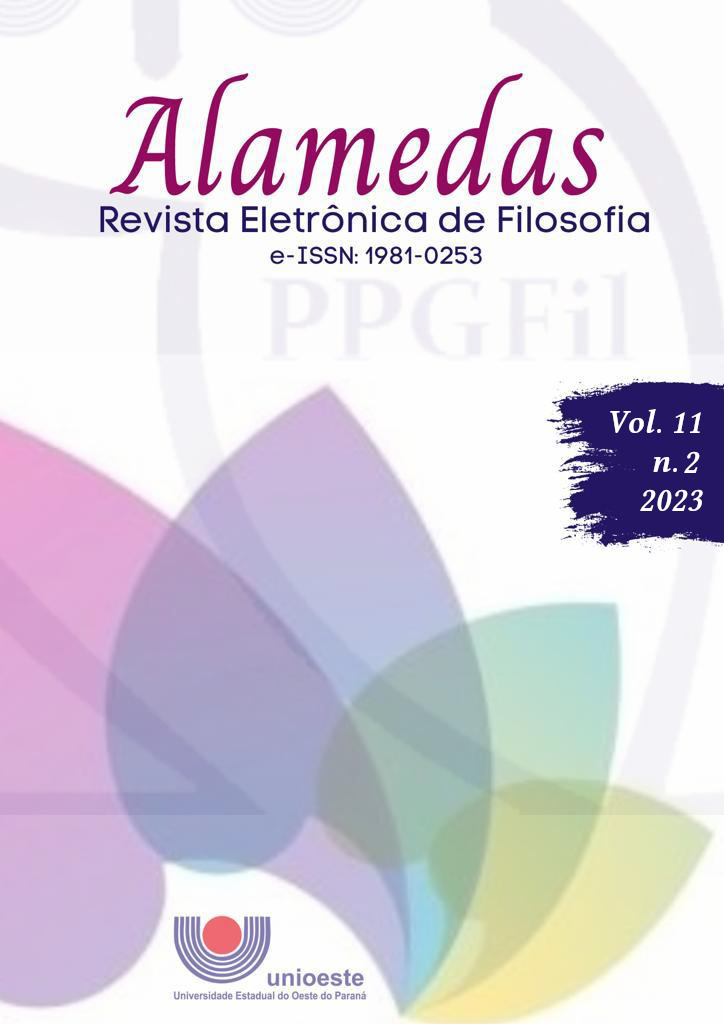O “ateísmo” antropológico de Ludwig Feuerbach
uma proposta de restauração do ser humano sensorial
DOI:
https://doi.org/10.48075/ra.v11i2.32113Abstract
Ludwig Feuerbach's thought has as its fundamental proposal the understanding of religious phenomena through the reduction of these phenomena to the human dimension. Thus, we will seek here to understand in which aspects Feuerbach's philosophy should not be characterized merely as an "atheistic philosophy", but rather as a humanist anthropology or a new philosophy that has at the heart of its understanding the understanding of the human being from the human being itself as sensory. Our hypotheses are that Feuerbach, because he dealt with the topic of religion, ended up being relegated simply as a hermeneutist of Christianity or an inveterate atheist, which does not seem to be completely acceptable. His philosophy sought, above all else, the confirmation of an anthropology based on the sensitive human being, in which there are conditions that predispose the existence of human sensoriality such as housing, food, education, work, but which, it seems, These were relegated themes in Feuerbachian thought. Feuerbach sought in religion only the foundation for his final defense: the complete human being. Our conclusions were that despite Feuerbach being treated as a “missionary atheist” or “inveterate atheist” or even a mere critic of religion, he always sought, even if not so explicitly, to rescue men from their insensitive religious condition. , without mediation with the material content of the world. In short, Feuerbach was one of the greatest precursors of modern anthropology, as he centered man on earthly issues.
Downloads
Published
How to Cite
Issue
Section
License
Copyright (c) 2023 Alamedas

This work is licensed under a Creative Commons Attribution-NonCommercial-ShareAlike 4.0 International License.
Aviso de Direito Autoral Creative Commons
Política para Periódicos de Acesso Livre
Autores que publicam nesta revista concordam com os seguintes termos:
1. Autores mantém os direitos autorais e concedem à revista o direito de primeira publicação, com o trabalho simultaneamente licenciado sob a Licença Creative Commons Attribution que permite o compartilhamento do trabalho com reconhecimento da autoria e publicação inicial nesta revista.2. Autores têm autorização para assumir contratos adicionais separadamente, para distribuição não-exclusiva da versão do trabalho publicada nesta revista (ex.: publicar em repositório institucional ou como capítulo de livro), com reconhecimento de autoria e publicação inicial nesta revista.
3. Autores têm permissão e são estimulados a publicar e distribuir seu trabalho online (ex.: em repositórios institucionais ou na sua página pessoal) a qualquer ponto antes ou durante o processo editorial, já que isso pode gerar alterações produtivas, bem como aumentar o impacto e a citação do trabalho publicado (Veja O Efeito do Acesso Livre).
Licença Creative Commons
Esta obra está licenciada com uma Licença Creative Commons Atribuição-NãoComercial-CompartilhaIgual 4.0 Internacional, o que permite compartilhar, copiar, distribuir, exibir, reproduzir, a totalidade ou partes desde que não tenha objetivo comercial e sejam citados os autores e a fonte.


